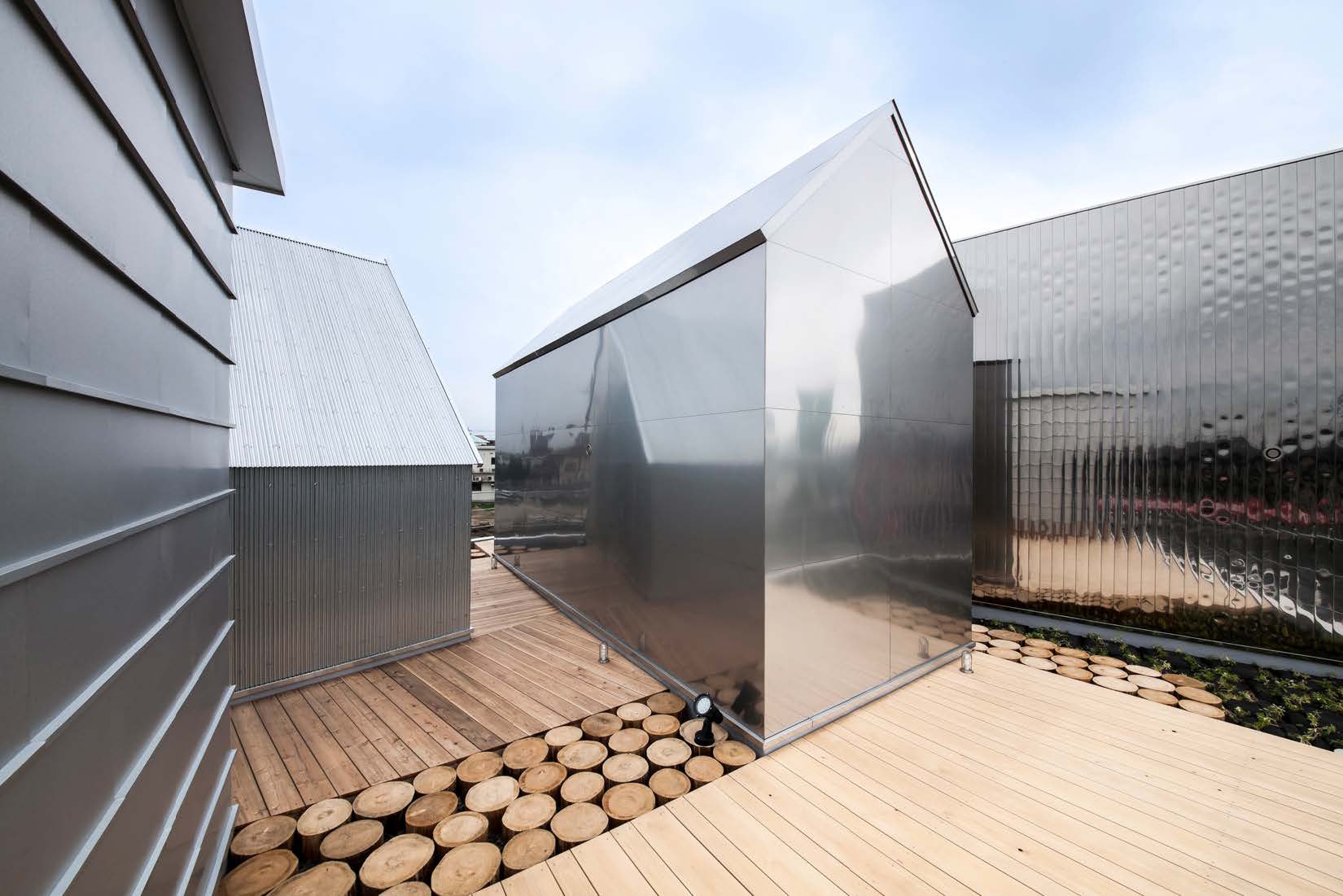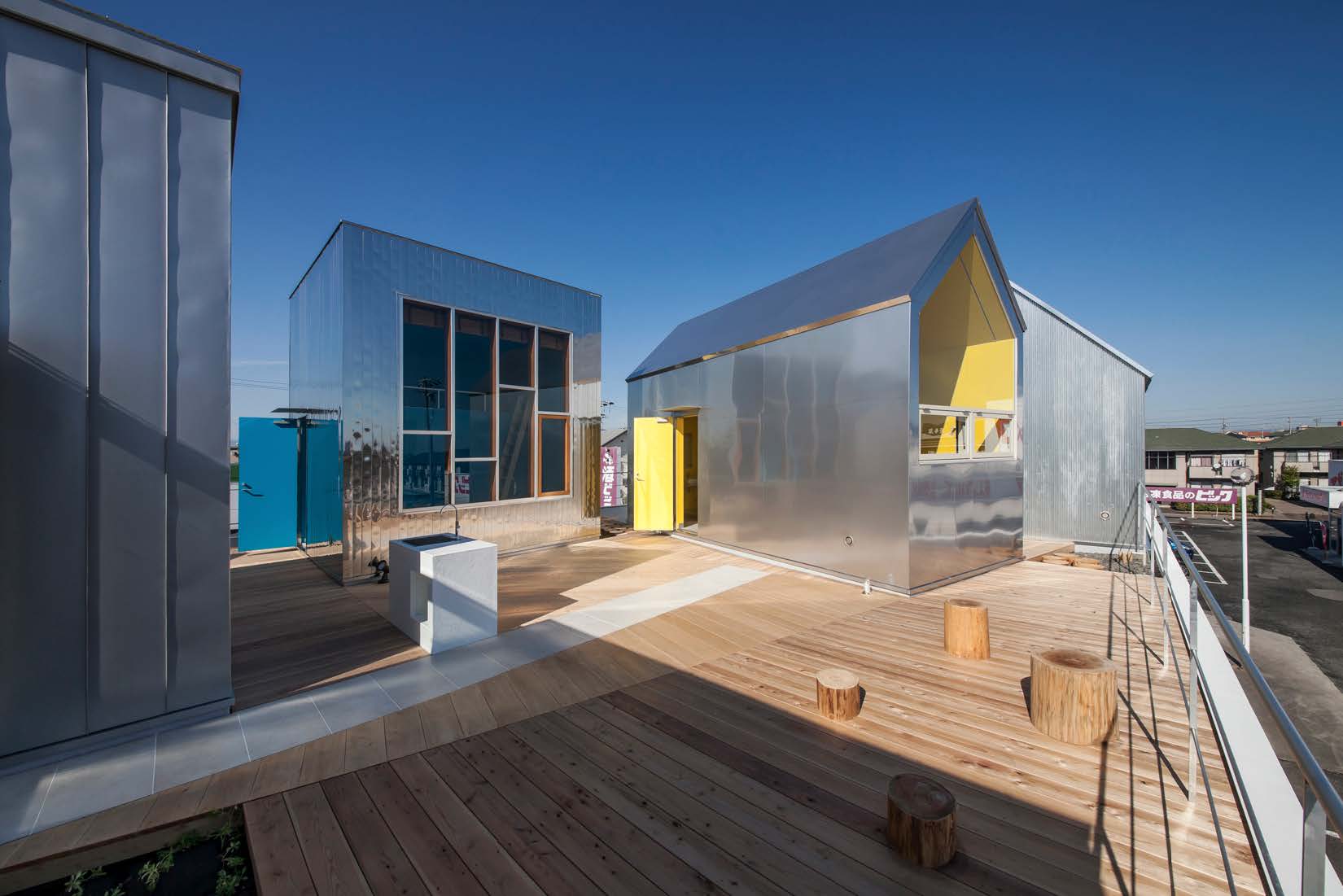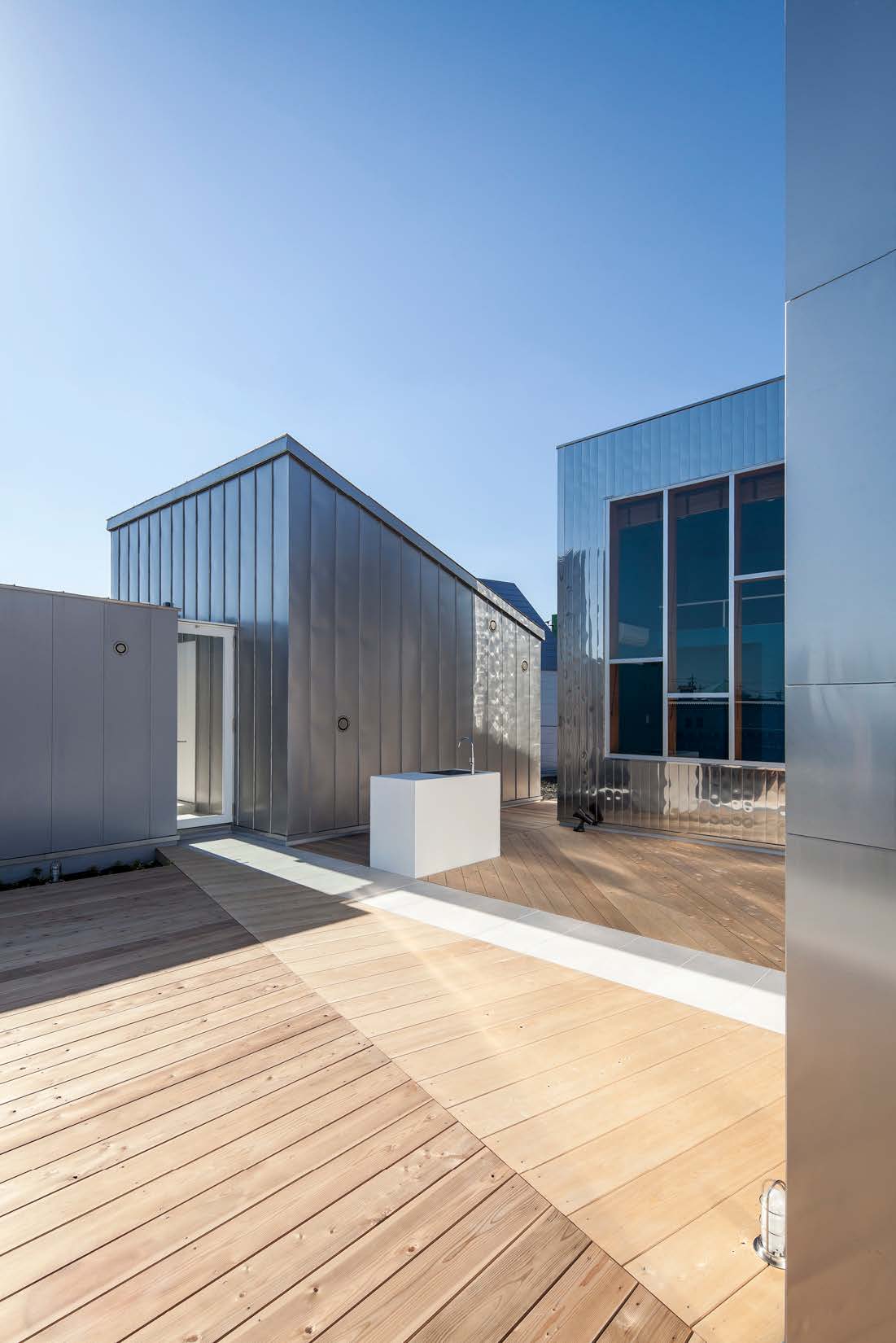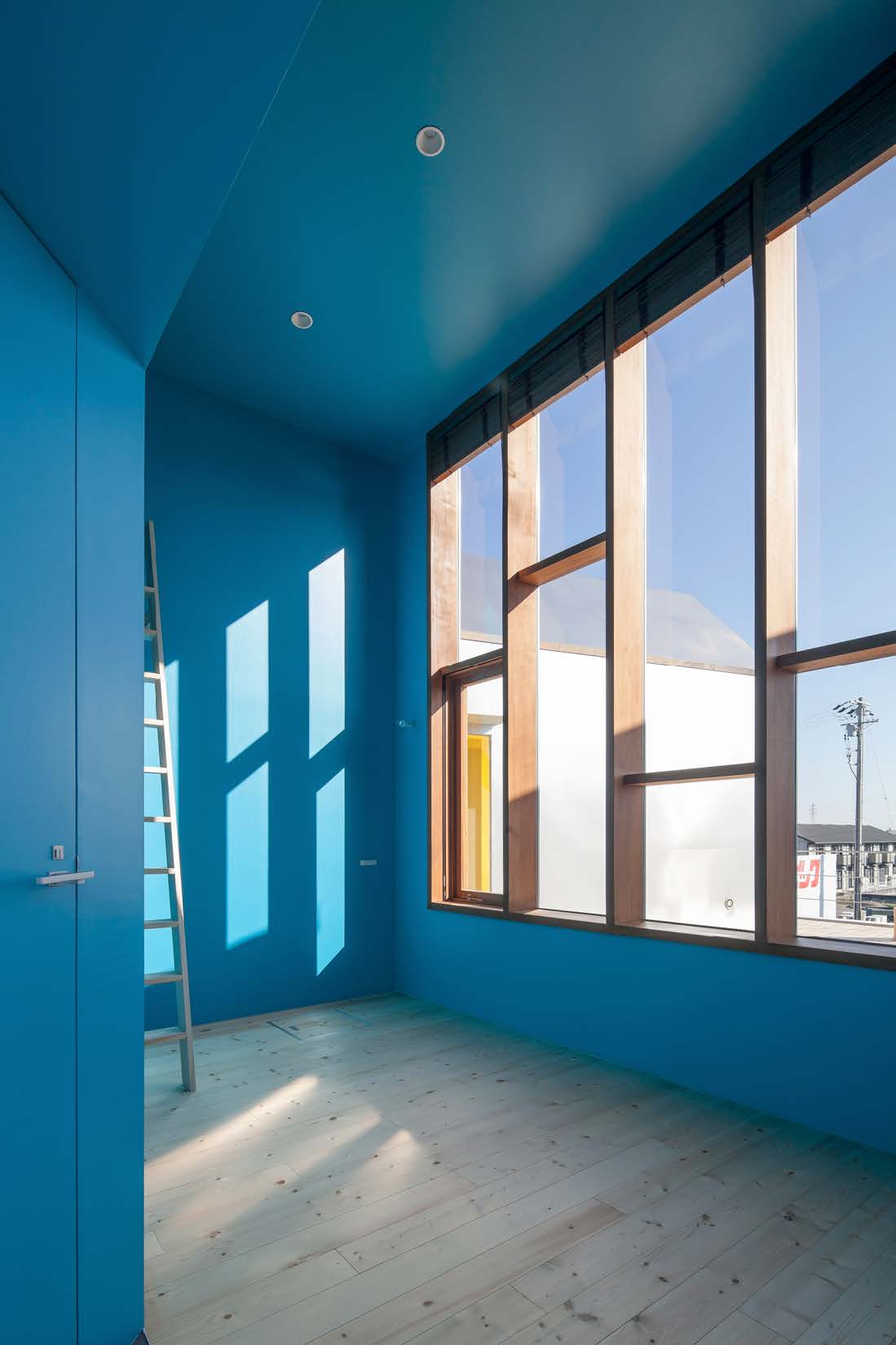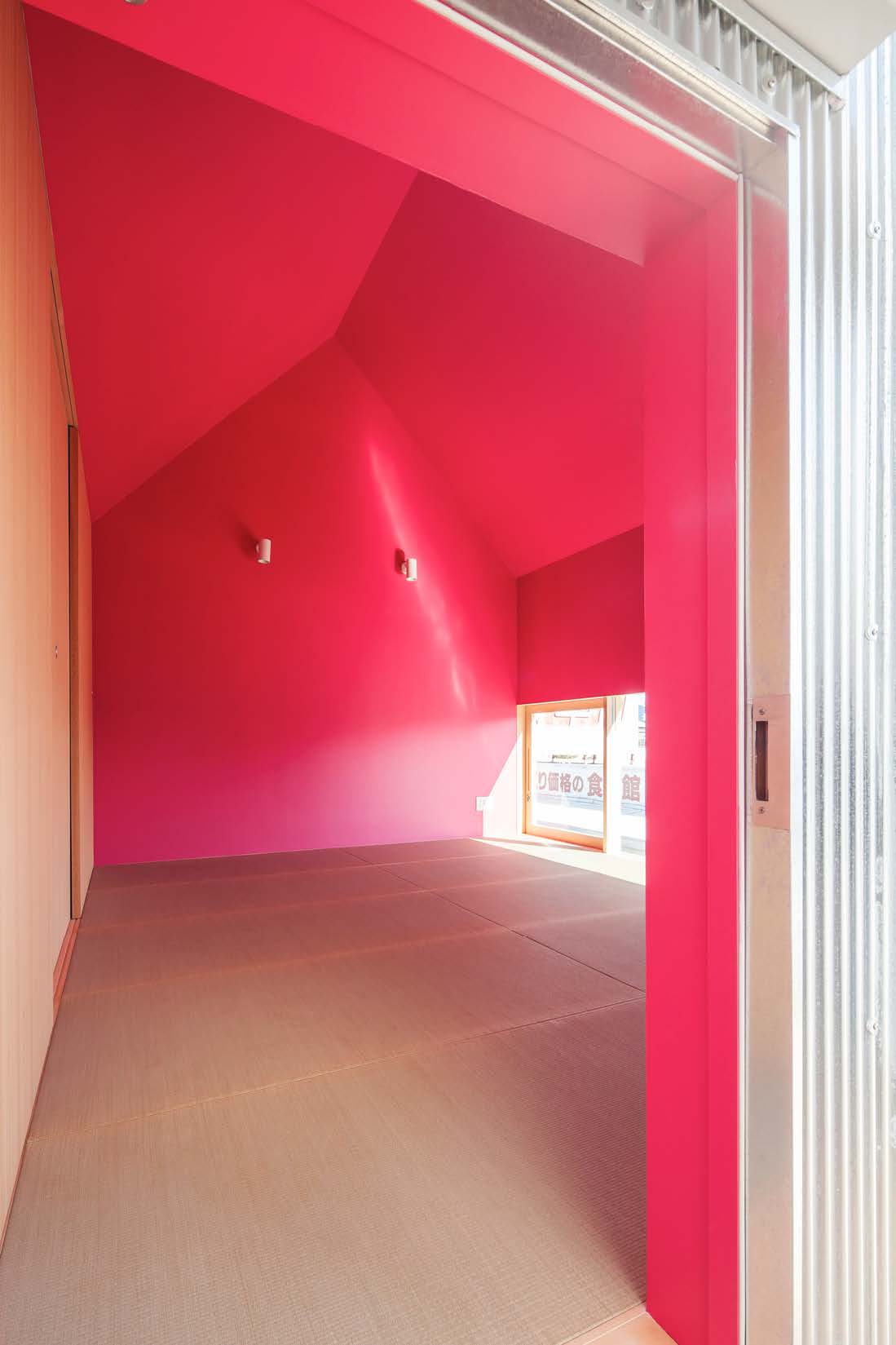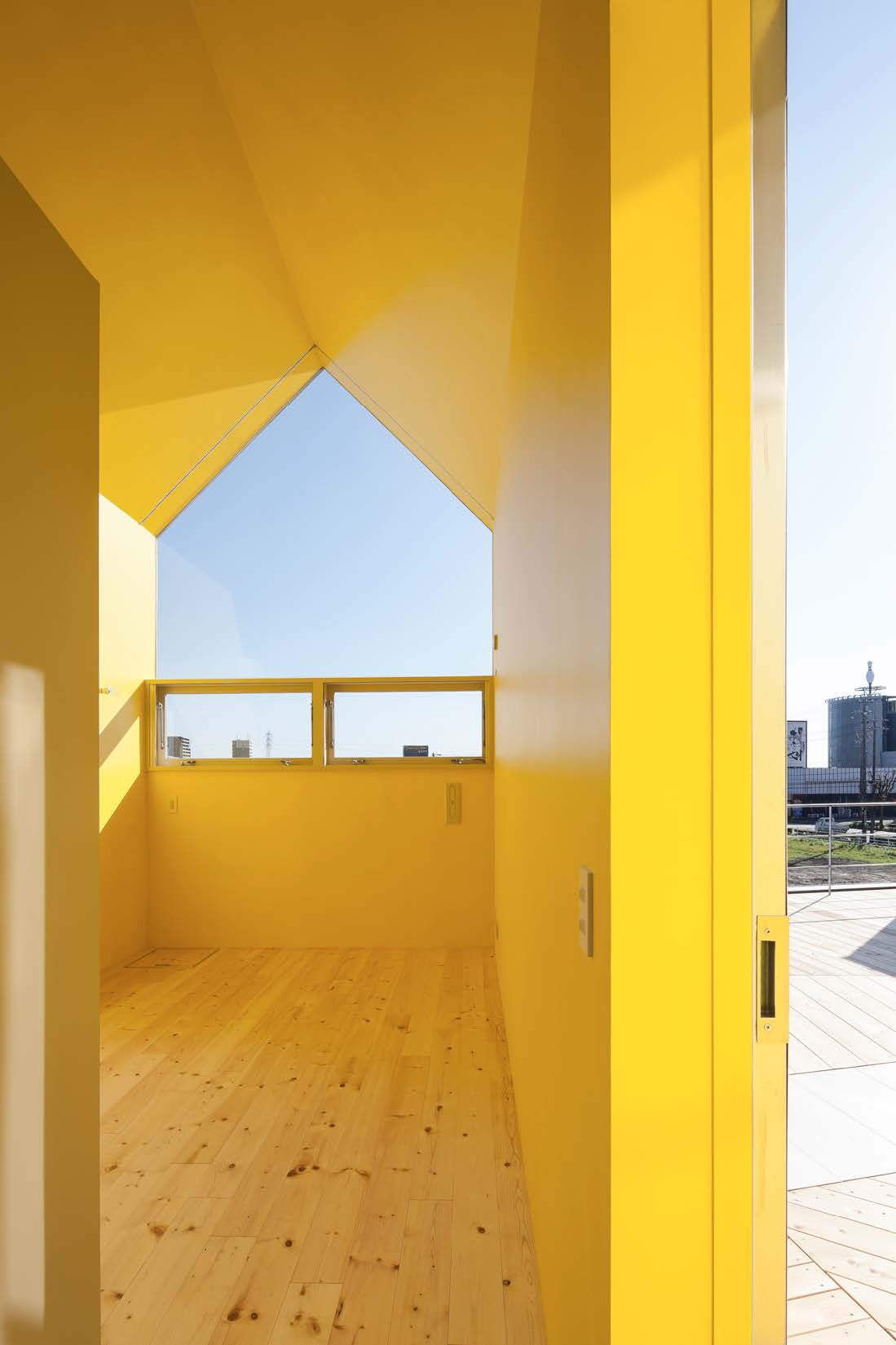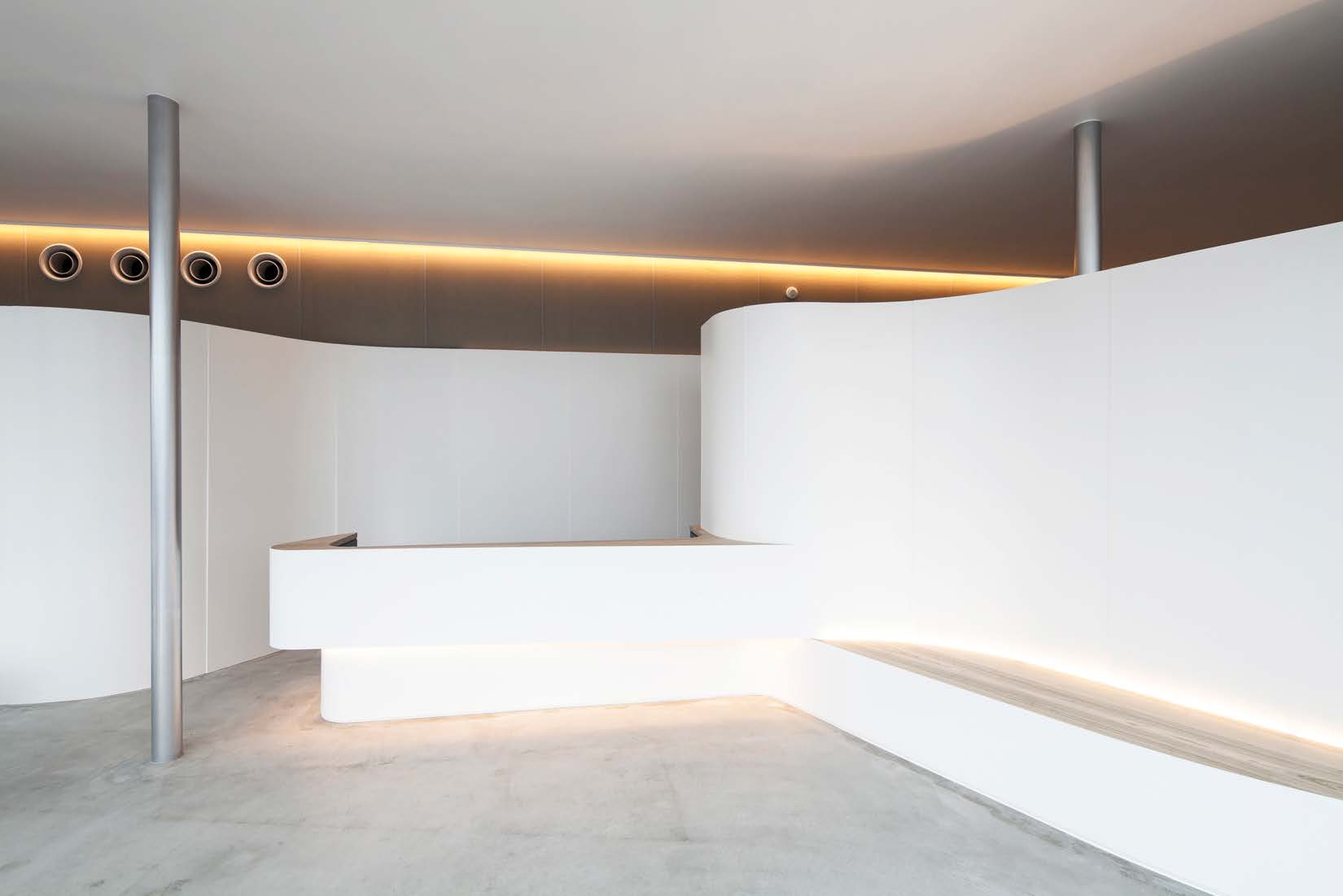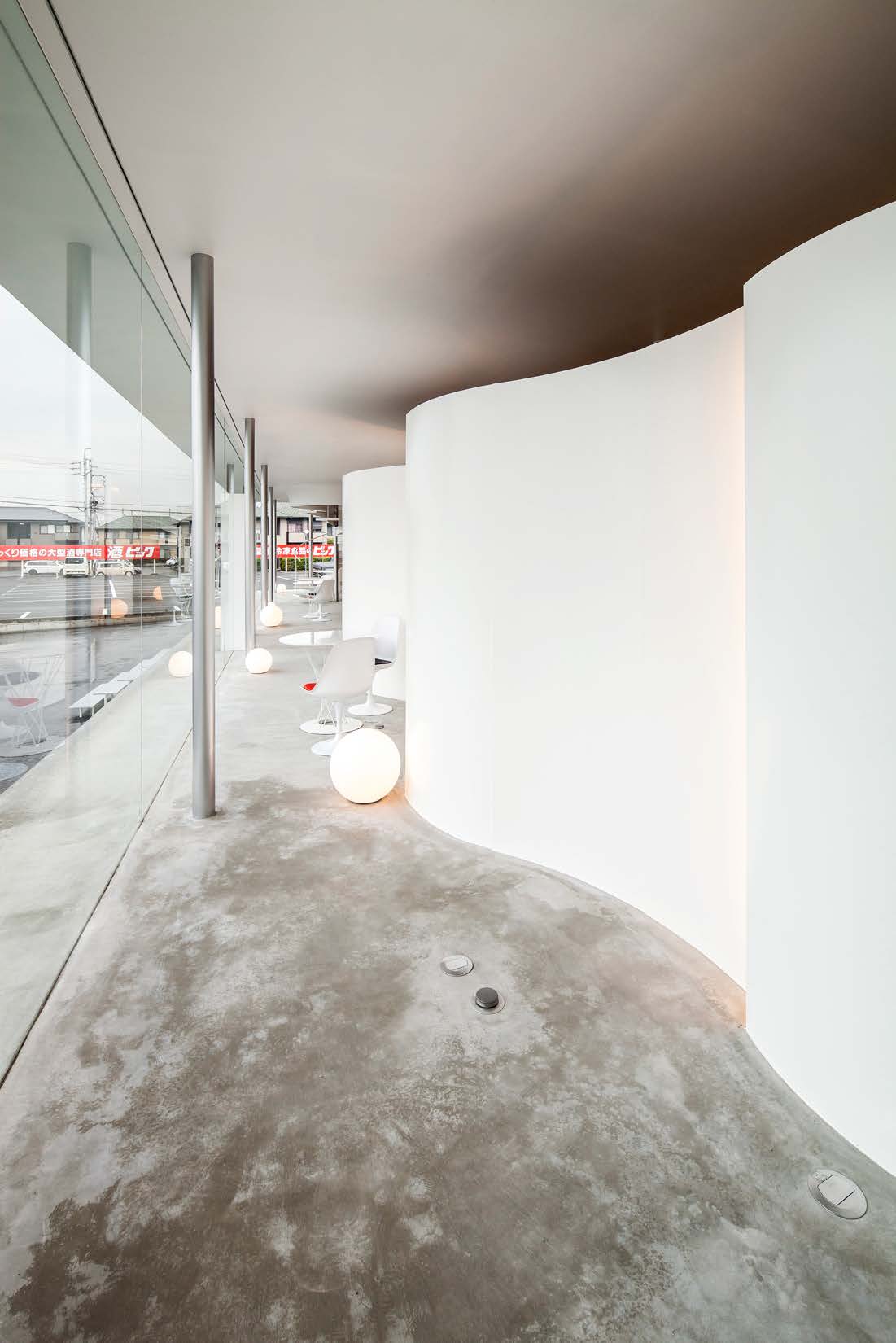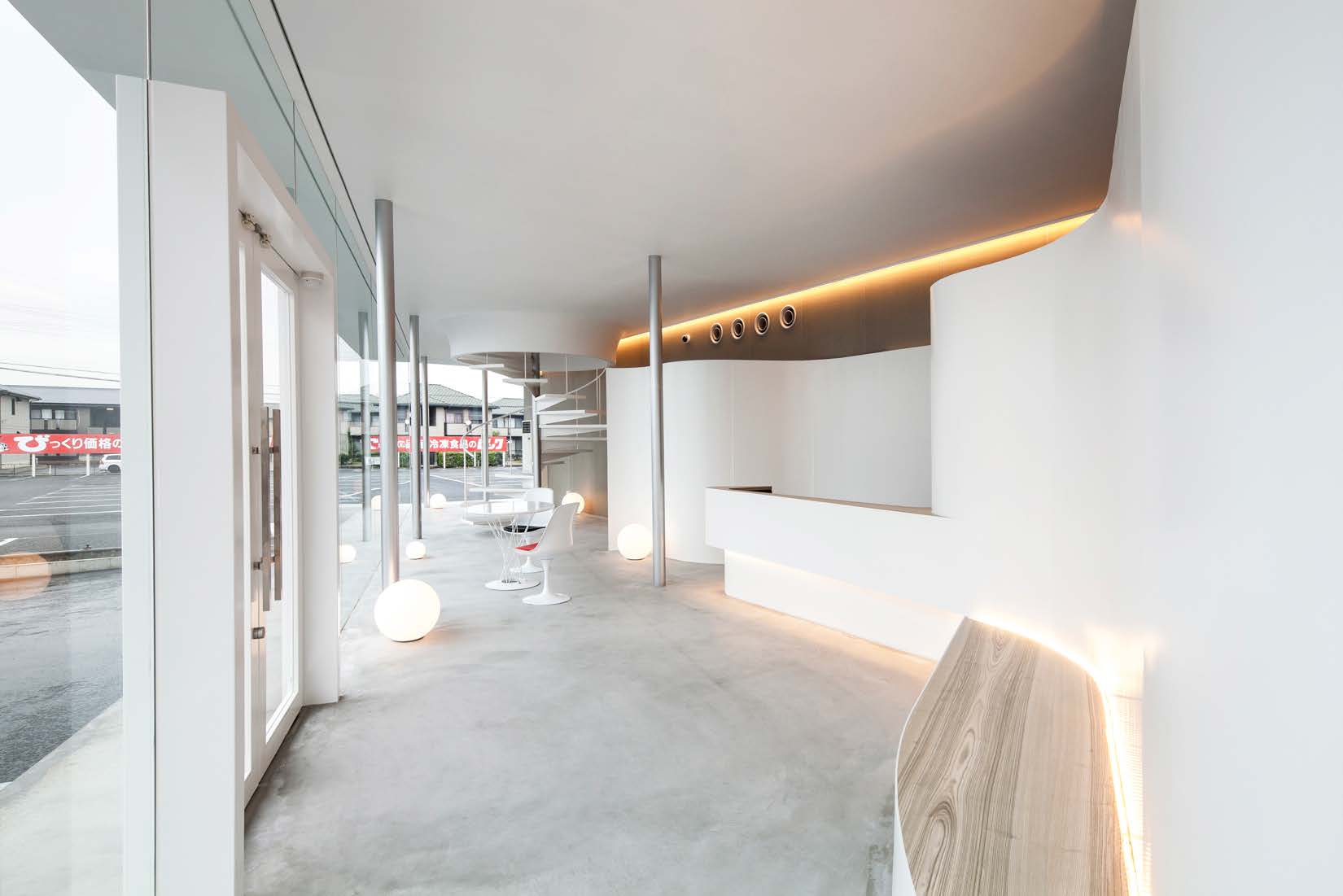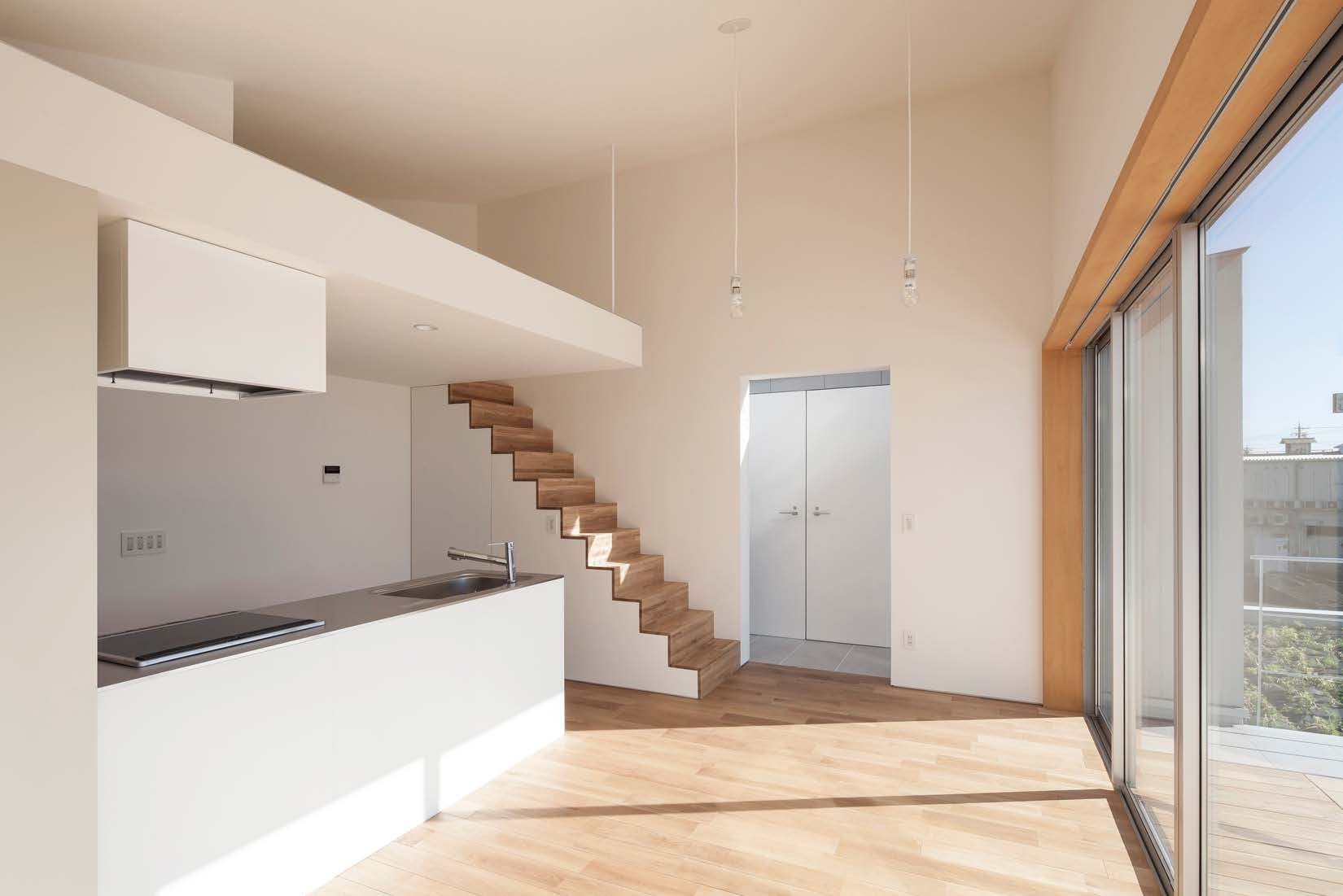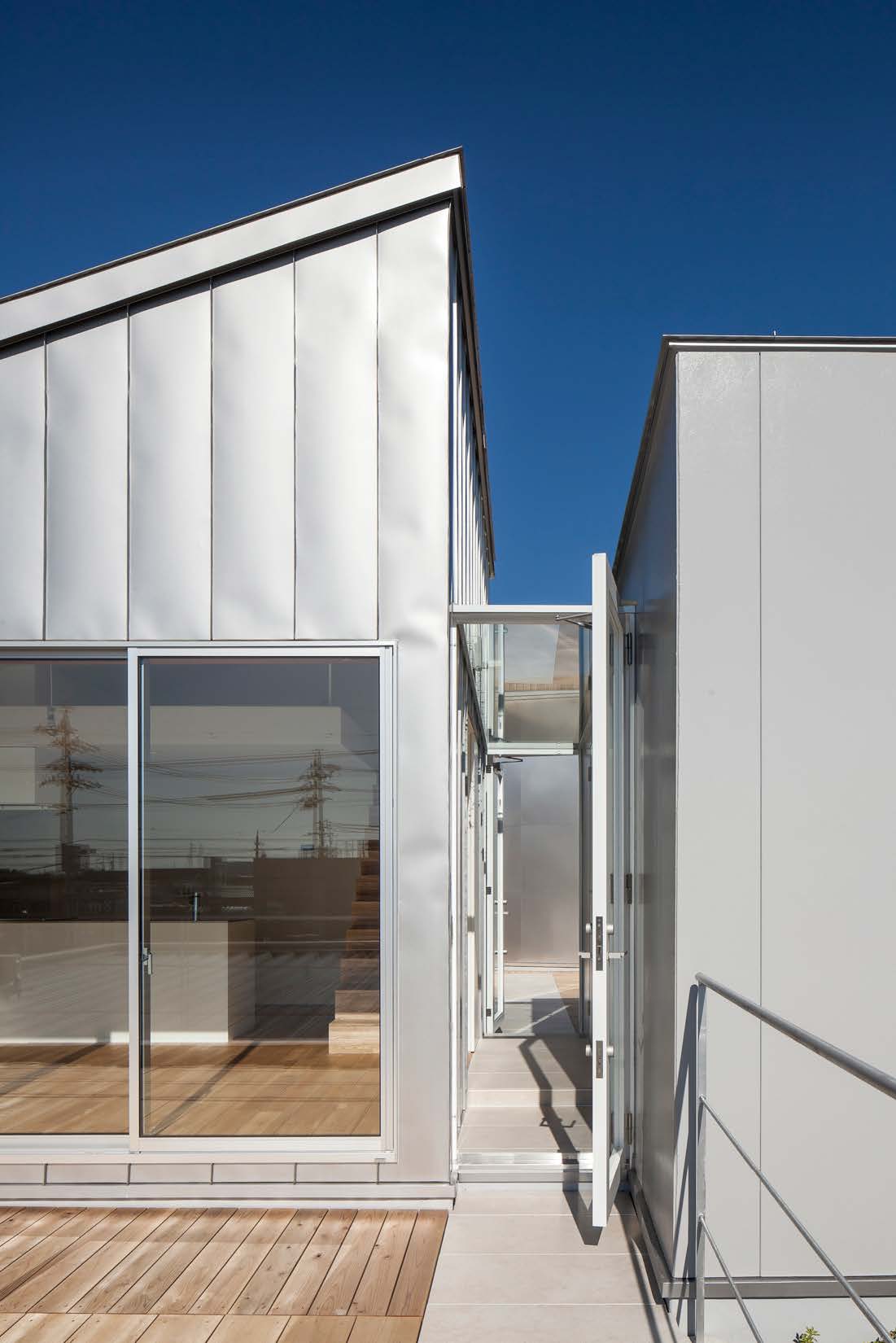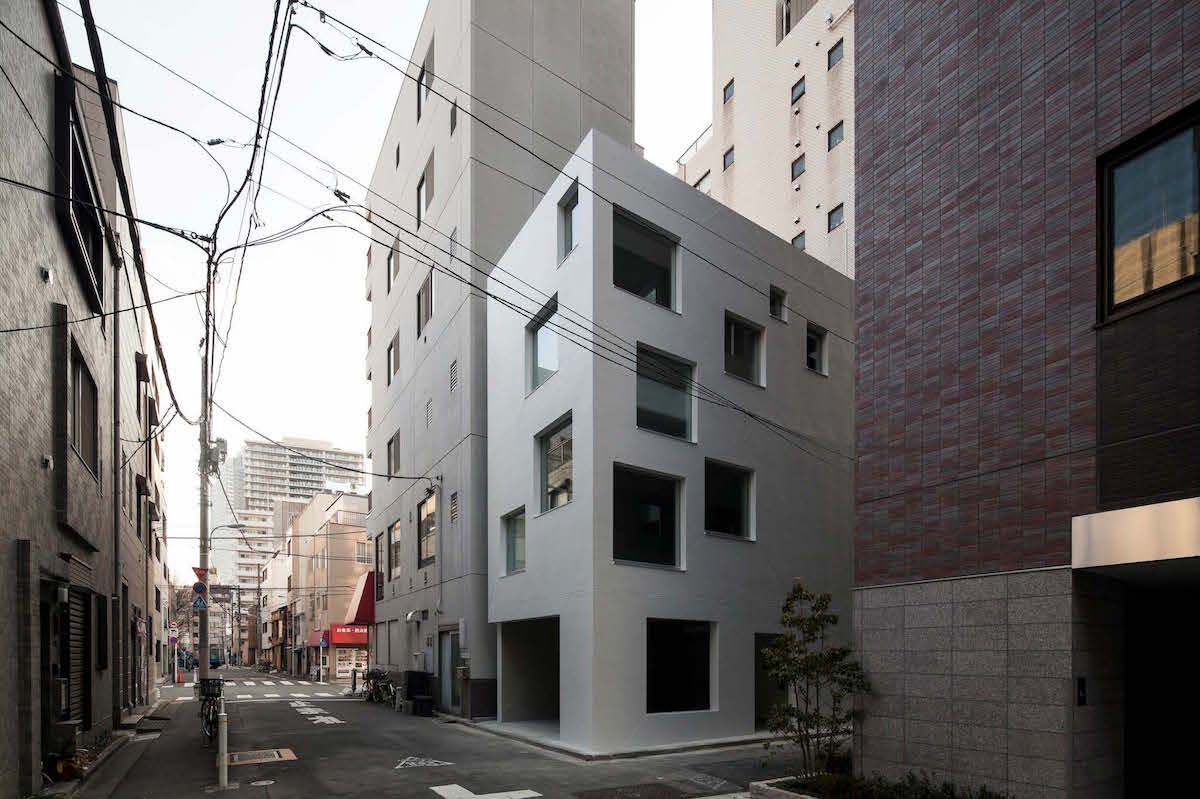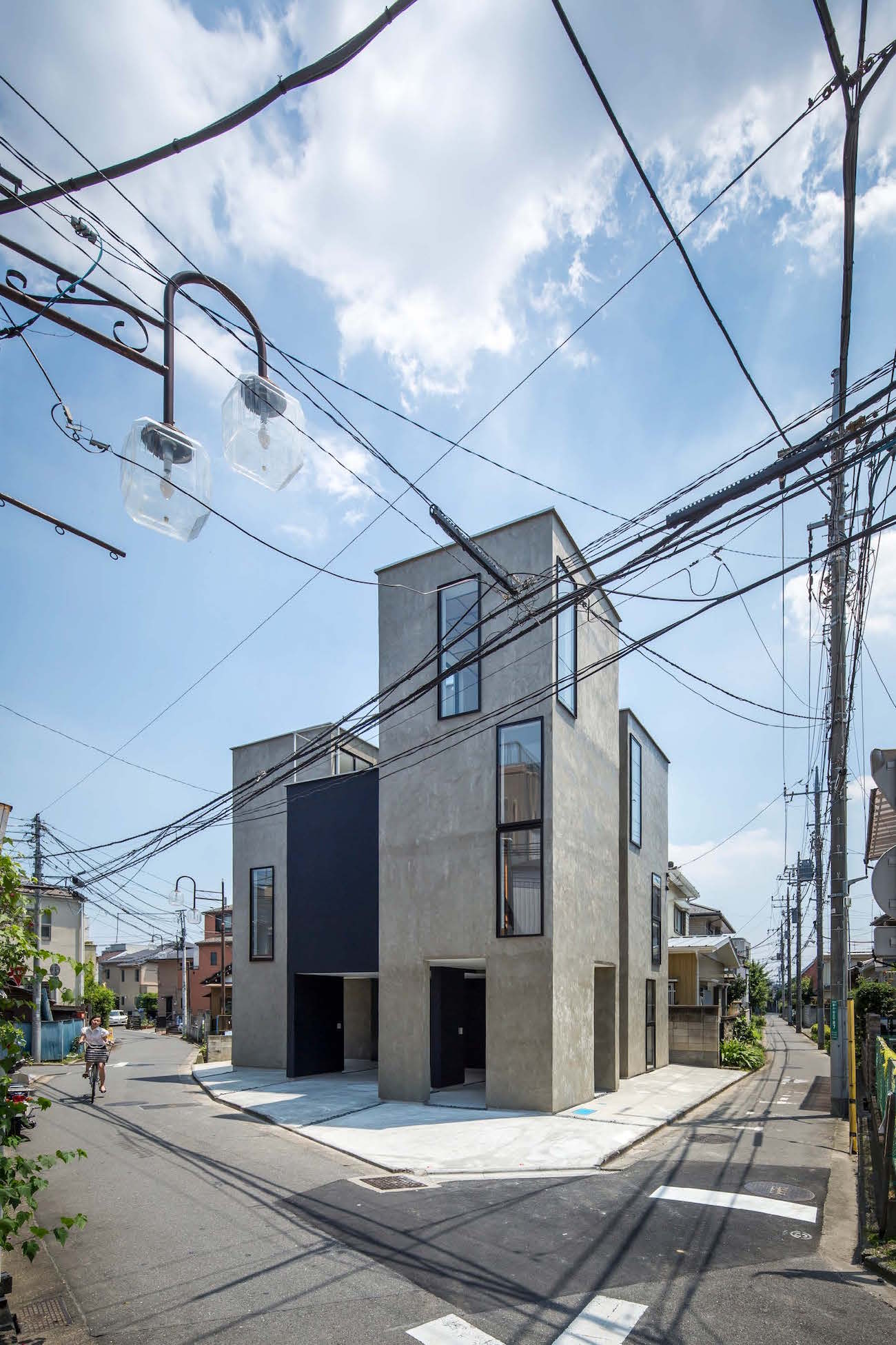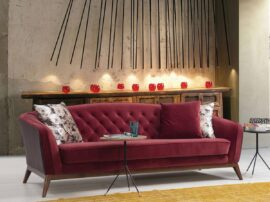Typical suburban cities are a completely car-based society. Various buildings including mega-shopping malls, amusement facilities, DIY stores, electronics retail stores and restaurants are lined up along arterial roads, with huge billboards displayed on top. Such scenery evokes the image of a webpage on a computer display, filled with glitzy banners all over. Many people exist there, but we don’t feel their presence. Urban space along roadsides in outlying cities is now transformed into a two-dimensional interface.
We designed a flagship office of a printing company whose headquarter is situated in the Greater Tokyo Area. The new office, covering the Kansai and Chubu Regions, is situated in Suzuka City, Mie Prefecture. The program includes an office, a warehouse serving as a hub for long distance transport, company housing and guest rooms. The company’s intention is to make this office rooted in the community, and also to ensure a pleasant living environment. Respecting these intentions, our plan provides an office on the ground floor and residences on the second floor.
How can we live comfortably on the suburban roadside?
Though you might never find it from fast driving cars, some livable space actually exists behind the billboards. We saw possibilities there and decided to provide a small world accommodating their comfortable lives 5 meters above ground. Diagrammatically, it seems as if “living in the billboards.”
Small huts (housing units) are built on top of the office roof. Each hut is approximately the same size as a typical billboard of the area. The front façade is rather austere with no windows, and on the contrary the east façade is quite open with large windows to bring ample morning light inside. The huts are clad in various kinds of metal sheets with different reflectance properties. The ever-changing sky and the surrounding environment are reflected on the surface, scenes in everyday lives are mirrored and the lively atmosphere is transmitted to the outside. This is an analogy to printing, expressing the process of input (information) and output (printing on paper).
This is a small “town”, which is now beginning to prevail in this community behind banal billboards. Eventually these “towns” will be incorporated into the community, while enhancing communication and interaction between people. Display of such vital activities will serve as new “billboards” communicating the potential of this community. Instead of competing with other billboards, this “town” will gradually be integrated into the community and become a center of community activities.
Architects: +S/Shintaro Matsushita+Takashi Suzuki
Location: Suzuka, Mie Prefecture, Japan
Interior Design: knit/Naohito Ikuta
Construction: Ohno Construction Company
Area: 442.0 sqm
Project Year: 2014
Photographs: Hiroyuki Hirai
Location: Suzuka, Mie Prefecture, Japan
Interior Design: knit/Naohito Ikuta
Construction: Ohno Construction Company
Area: 442.0 sqm
Project Year: 2014
Photographs: Hiroyuki Hirai





